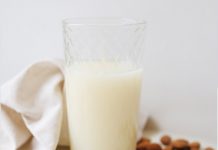Steenberg Pettersson
@milemap8
Profile
Registered: 3 years, 4 months ago
Precisely what are Illuminated Firearm Scopes? Atoms, molecules, factors, isotopes... BORING! Well, it may be for some people, but personally, I believe it's rather fascinating. For one thing, everything on this planet is made from these types of invisible contaminants. Although it might seem of atoms when imagining the smallest "thing" in the world, when asking yourself what an atom is made of, it becomes clear there are smaller debris. What is an Atom? Atoms are made out of the variety of electrons, protons, and neutrons - subatomic particles. Just how many of these three subatomic dust an atom contains is dependent upon what element element this belongs to. Atoms are categorized by the unique number of protons within the nucleus - this is the atomic amount. A stable atom must have an equal number of protons and electrons. Protons have a very good positive electrical charge whilst electrons enjoy a negative one. Therefore , in the event that there are more protons when compared to electrons, you have a really charged ion, also known as a cation. Conversely, if you have further electrons as opposed to protons, you may have a negatively charged ion, also known as an anion. Atoms with a total electrical request as detailed can be built so unnaturally from an important neutral express by ionizing radiation. So we protected protons and electrons, but you may be wondering what does the neutron do? Good, you can think of neutrons as the stuff that binds the protons together. As to why do they should be be limited together? As mentioned above, protons and electrons will be electrically costed, and as such, will repel dirt of the same indication. This is why categories of protons will need neutrons to maintain them together. Hydrogen-1 will not have any kind of neutrons simply because it only has got one proton. What is https://higheducationhere.com/isotopes/ ? Consequently we know that the atomic amount is derived from the quantity of protons within an atom's center, but what about isotopes? A great isotope is usually defined by the number of neutrons in an atom's nucleus. Within a given element element, you will find often several of these isotopes. For instance , hydrogen has got 1 wasserstoffion (positiv) (fachsprachlich), but according to what hydrogen isotope it truly is, the number of neutrons vary. Isotopes are known as by their offered chemical feature, followed by the atomic majority, as in hydrogen-1, hydrogen-2, etc. This means that even though the number of protons remains frequent, the number of neutrons changes. Thus hydrogen-2 would have a ungeladenes nukleon as well as a proton, while hydrogen-3 will have a couple of neutrons and a wasserstoffion (positiv) (fachsprachlich). Hydrogen-1 has only 1 wasserstoffion (positiv) (fachsprachlich) and no neutrons. By subtracting the atomic number on the mass multitude, you take advantage of the number of neutrons. Isotopes may be recognized in writing by a central part name accompanied by a distinct weight number such as hydrogen-3 or perhaps iodine-131. In the event that speaking of different isotopes, radioactive or not, they will be recognized by brand. Therefore , familiarizing yourself while using structure from atoms and related lingo can be helpful.
Website: https://higheducationhere.com/isotopes/
Forums
Topics Started: 0
Replies Created: 0
Forum Role: Participant

















